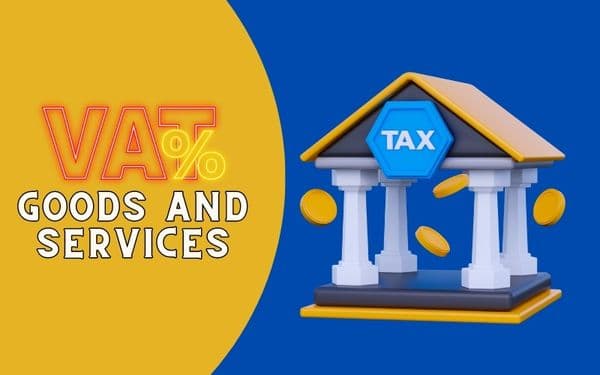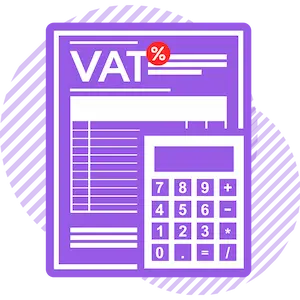VAT, more commonly known as Value Added Tax, is an everyday part of life that many of us encounter without fully grasping its intricacies. Though its meaning might seem remote and unfamiliar to some of us, its effects have an impactful and direct impact on every purchase made. No matter what we purchase, VAT can add significantly to the costs. But why do they charge VAT?
These questions need answering as it has direct repercussions for the financial decisions we make every day. This blog post seeks to shed light on VAT’s influence on prices of goods and services, offering an in-depth examination of how this tax affects both businesses and consumers alike. By exploring this subject further, we hope to give everyone an understanding of its complexities while offering an all-encompassing guide that everyone can relate to.

VAT and Prices of Goods
At its core, VAT (value-added tax) is simply an increase in price due to tax. In the UK we have different VAT rates for various goods; I will give an example from personal experience here.
Recently, I made the mistake of purchasing shoes marked for £100 but when I reached the counter my bill came to £120 due to VAT; an 18% standard rate had been added onto them which drove up their final cost by 20%.
Variability in VAT Rates on Goods: Not all goods are subject to VAT at an equal rate. Some food items, for instance, are zero-rated – meaning you won’t incur any VAT upon purchasing them – while clothing for children also falls into this category. As a consumer, it is essential that you understand these rates since they could drastically affect your shopping budget.
Impact on the Consumer: As budgets come into focus, let’s discuss the impact of VAT on you, the consumer. VAT increases prices for end consumers like us; not just businesses. When shopping, VAT may not always be included in the listed price – understanding this breakdown can make us better buyers.
VAT and Prices of Services
Moving beyond goods, let’s now explore how VAT affects pricing of services in the UK. Like goods, services are subject to VAT as an added charge that could drastically alter your expenses.
How VAT Is Charged on Services: In the UK, services typically incur a standard VAT rate of 20% – just like goods. This means if you hire services for anything from professional housecleaning to employing digital marketing agency for business needs, around one fifth of what you pay may go directly to Her Majesty’s Revenue and Customs (HMRC). A specific example was when I hired a freelance graphic designer quoting me at £500 but receiving an invoice for £600 after taking into account 20% VAT charges.
Exception: Certain services, like domestic passenger transport, may incur a reduced VAT rate of 5%; and services like education and healthcare may even be exempted altogether from VAT payment.
What this Means for Consumers: VAT impacts budgeting significantly, making redecorating your home an expensive proposition without accounting for VAT costs a risky proposition. To minimize surprises when making such plans, always ask whether quoted prices include VAT; doing so can allow more accurate planning.
Zero-Rated or Exempt Items
After discussing goods and services, it’s essential to delve deeper into zero-rated and exempt items as these represent exceptions to standard VAT regulations and directly affect what you pay in VAT.
Zero-Rated Items: Zero-rated goods and services are subject to VAT but at a 0% rate, meaning that these goods or services remain part of the VAT system while being taxed at zero percent instead. Examples include most food products, books, and children’s clothing – I was delighted when I realized the books I purchased for my niece’s birthday didn’t add any extra costs due to VAT!
Exempt Items: Conversely, exempt items fall entirely outside the VAT system and cannot reclaim any VAT they have paid on related business expenses such as insurance premiums, postage costs or certain educational and training services. Examples may include insurance policies, postal services and educational training services.
How They Differ from Regular VAT
Zero-rated and exempt items differ substantially from goods and services subject to regular or reduced VAT rates, in that businesses can still claim VAT back when purchasing zero-rated items, whereas with exempt ones this option is unavailable to them. Therefore, distinguishing between zero-rated and exempt can have significant ramifications on expenses as well as how much VAT reclaimable. As either a consumer or business owner it can impact costs or your ability to reclaim VAT back.
VAT and Business

So far we have focused on how VAT affects consumer products and services from a consumer viewpoint, but now let’s switch gears and consider its effect on businesses themselves. Whether or not you own one yourself, understanding its impact on pricing strategies and operational costs is an essential skill that any aspiring or established entrepreneur must understand in order to succeed.
Businesses act as collectors of VAT for the government, so when setting prices for goods and services they must factor in VAT rates as part of their listed price. From my consulting experience with small business owners, I’ve witnessed how careful one must be about VAT accounting: all collected VAT must be reported back to HMRC at regular intervals via VAT returns.
VAT Has an Implication on Pricing Strategies
VAT plays an essential part in pricing strategies. For instance, if a business wants to sell a product for £100 on the market, they must take account of 20% VAT when setting their base price to reach £83.33 so as to reach their intended £100 mark without incurring losses in sales. This strategy ensures competitive edge while maintaining profitability without incurring losses in revenue streams.
Reclaiming VAT
One aspect of VAT that’s often misunderstood is reclaiming VAT. Businesses can reclaim VAT paid on goods and services related to business activities; this mechanism hel£ relieve some financial pressure associated with VAT costs; for instance if purchasing raw materials worth £10,000 plus £2,000 VAT can be claimed back, thus relieving some financial pressure.
How Consumers Can See VAT Charges and Rebate Claims
Now switching gears back towards consumer-based purchases, let’s discuss how you can identify VAT components when making purchases.
Examining Receipts and Bills: One straightforward method of understanding VAT can be seen when looking over receipts and bills from businesses operating within the UK, which are legally obliged to issue VAT invoices detailing how much VAT has been added on; I remember one instance where a restaurant bill displayed exactly how much VAT had been charged per item on its menu; such transparency allows you to understand where your money is going.
Check if VAT is Charged Correctly: For consumers that demand accuracy in their purchases and services, it’s advisable to double-check any VAT charges, especially those on expensive items or services. Most VAT calculations can be straightforward but mistakes do sometimes arise – with knowledge of standard VAT rates for various goods and services in hand you can easily determine whether you are being charged properly or not.
Conclusion
VAT is an essential component of pricing goods. Businesses collect this tax and pay it over to the government, but consumers foot the bill. Therefore, when shopping, pay close attention to how much of each price tag’s total amount goes toward VAT, doing so will not only make you an informed shopper but will help guide smart financial decisions as well.
With this guide, I sincerely hope that VAT has become less daunting and less complex for you to understand, providing greater clarity into its complexities. My intention is that with this knowledge in hand, you may now navigate your economic maze with more ease and precision.
Thank you for reading, and stay tuned for more insights into personal finance and business strategy.

